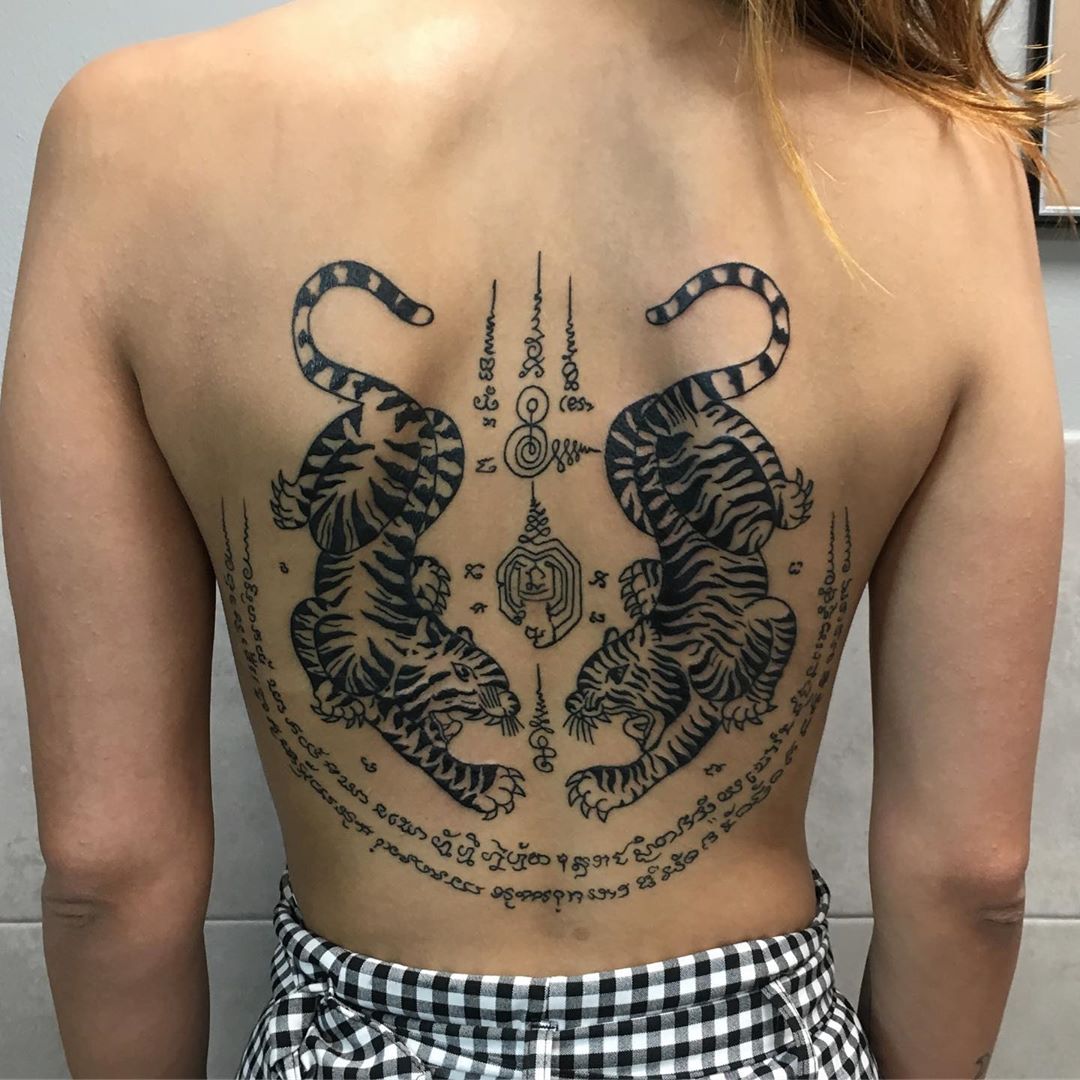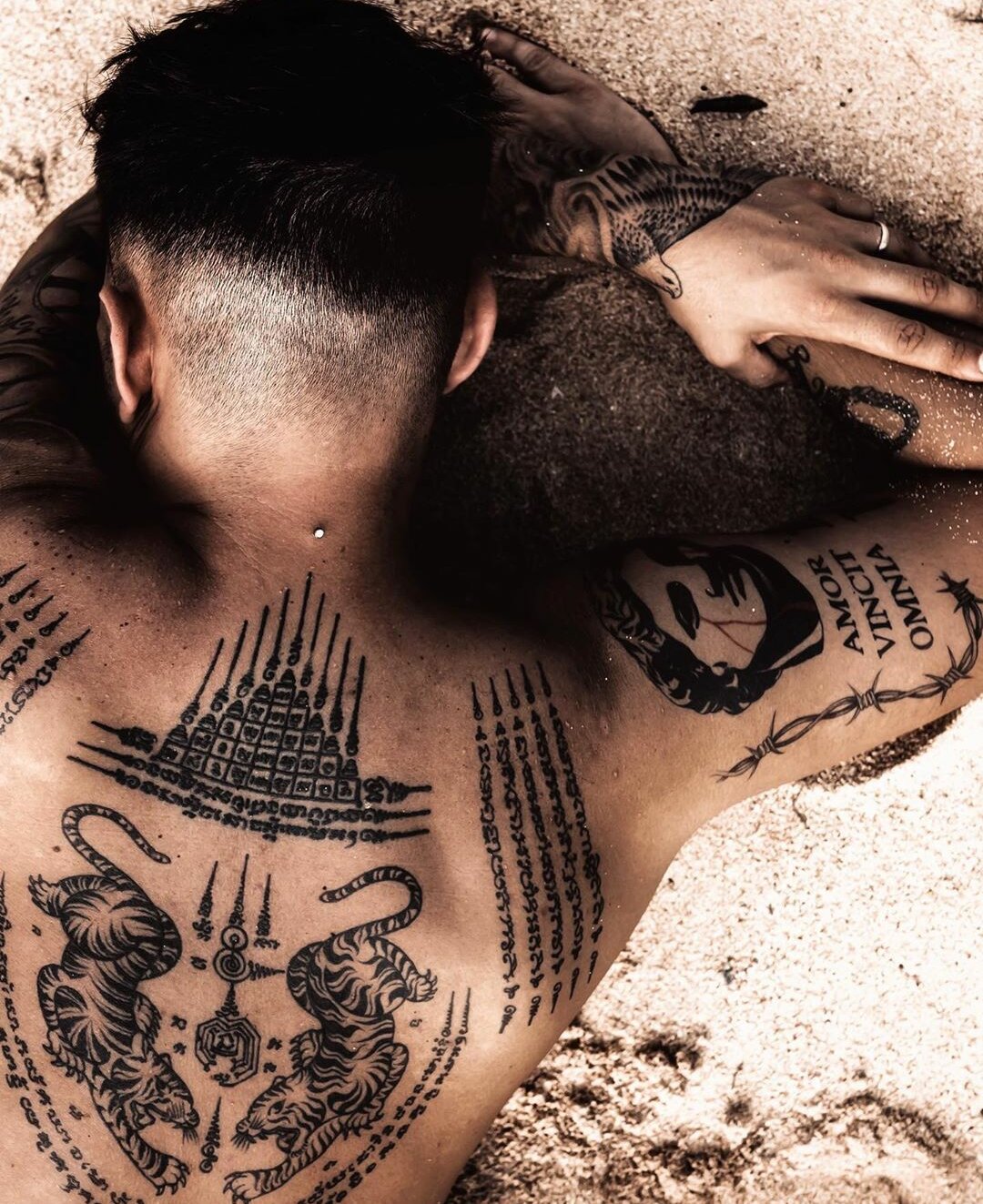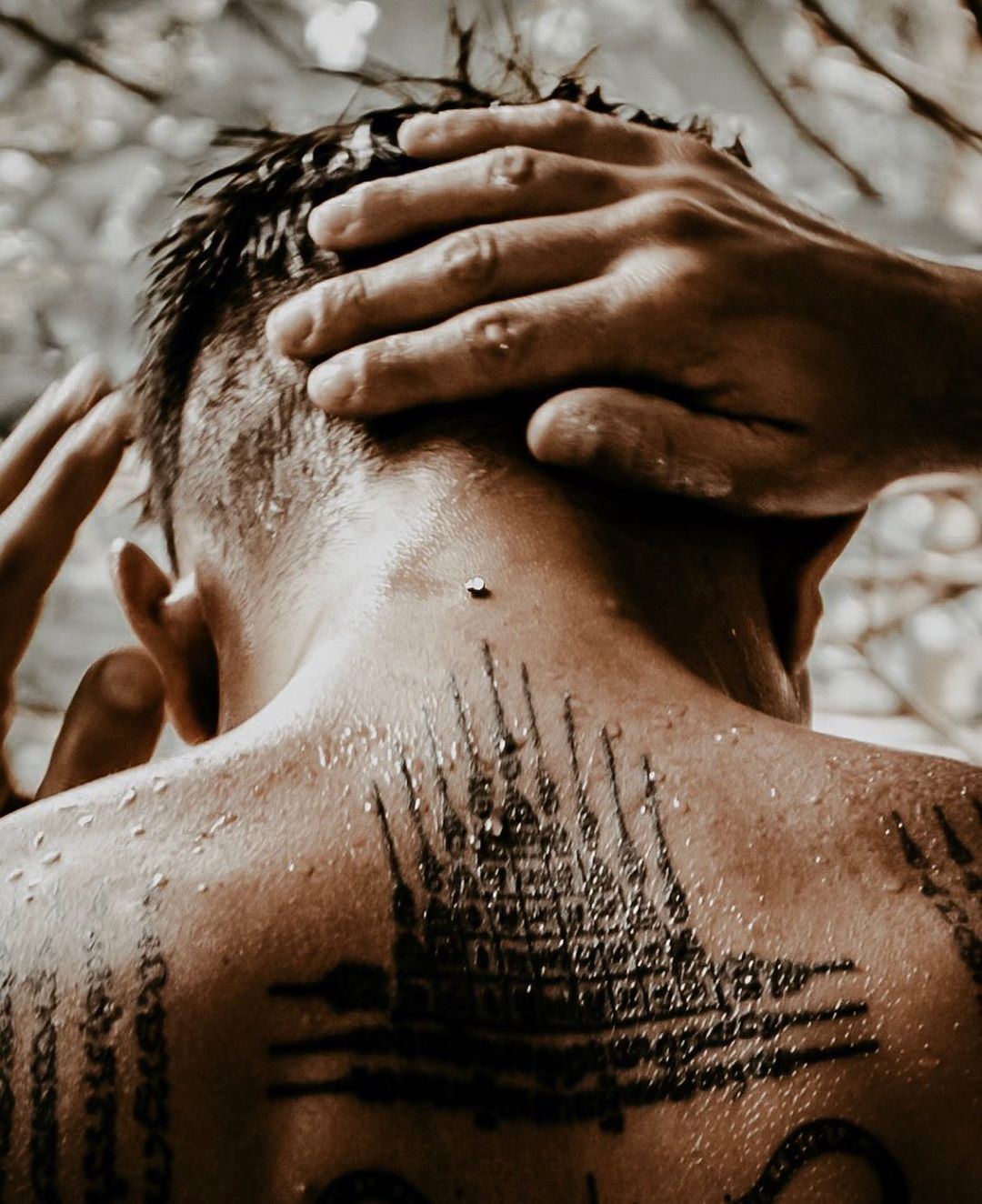

Sak Yant tattoos, also called Yantra, is a sacred form of tattooing that is practiced primarily in Southeast Asia in Thailand, Laos and Cambodia. "Sak" here stands for the pricking of the tattoo and "Yant" comes from the ancient Indian language of Sanskrit and refers to graphic, geometric representations with ritual significance. The tattoos are supposed to unfold magical powers and thus give the wearer protection, luck and strength. The Sak Yant tattoos enjoy a popularity with the Thais as well as with the tourists. Thus, however, the origin can be assumed already in the time of the Khmer kingdom. Today, the monk temple Wat Bang Phra in Bangkok is the most popular and most visited temple with regard to these tattoos.
What do I have to consider?
When stitching a sacred Sak Yants tattoo, important aspects must be taken into account, otherwise the effect of the tattoos could be lost.
- The tattoo is not engraved by an artist, but by a Buddhist monk, traditional healer or shaman. This person will also choose your motif and the body part.
- As payment a small donation serves in the context of an offering. Incense, flowers and cigarettes are also welcome gifts.
- In some places ground skin or ashes of a deceased monk as well as bile of an enemy are mixed into the ink to increase the power of the Sak Yant.
- The tattoo is not pricked with a machine, but with a long, sharpened bamboo cane to which a sterile needle is attached and repeatedly dipped into the ink.
- If you get a Sak Yant tattoo, this is connected with the knowledge that you have to keep to certain commandments from this time on, in order to unfold the true protection. These are handed down differently in places, but they have the following duties in common: You shall neither kill, steal, lie nor consume drugs, as well as not desire and love the wife of a neighbor.
If your Sak Yant tattoo is not engraved in the traditional way, no magical effect arises. So you can also get these motifs in classical tattoo studios, but then they have nothing to do with the original meaning and are a commercialization of the sacred tradition.
The tattoo process
The process of engraving Sak Yant tattoos is called "bidhi sak". The monk, also called "acharn sak", stabs the motif with the bamboo stick or nowadays also with the more often used metal stick, which is called "mai sak". It is said that the pain felt during the stinging represents all the sins committed. After the stinging the tattoo has to be consecrated in order to unfold its full power. Here the monk strikes the sore tattoo and consecrates the fresh tattoo with a liquid. During the whole session, incense sticks and the like are lit, and sacred mantras and teaching texts are recited.
The Motifs
The Sak Yant motifs consist mostly of writings of the Khmer language or the Buddhist Pali script and geometric figures and shapes such as circles, triangles and squares. Already the position reveals the effectiveness of the tattoo, because the higher the tattoo is stung on your body, the better the protection is supposed to work. Partly it is also believed in the defense of physical forces. Read also my post on the individual motifs with their meanings to learn more about them.
The Basics
Representative of the Buddha's face are the round yants, triangular yants represent the Buddha's triple gems and the square yants represent the four elements. The small dots and circles represent the sun and are meant to indicate that all living beings exist under the sun and under the sky. The classical jagged lines at the beginning and end of many writings are meant to represent the holy and enlightened beings.
Conclusion
The Sak Yants tattoos still serve as sacred symbols in Southeast Asia, but are also popular with tourists as a unique experience. However, they can also be stung merely for aesthetic intentions and are considered as pure body decoration. The Yant tattoos can be found, however, not only on the human body, but also on house walls, cars or other places in the form of paintings. Here, too, the respective protective functions are to be asserted.




Kommentar schreiben
Kommentare
Keine Kommentare